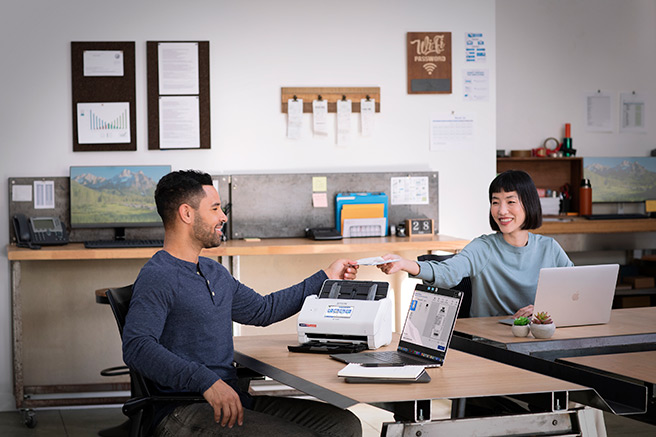By any chance, do you have a shoebox of receipts and a pile of invoices that you need to process?
Making sense of all of this can be a real chore and frustrating. A solution is to scan invoices and receipts. In this guide, we will touch on the importance of keeping good records but focus our attention on making this whole process simpler.
Importing of paper receipts or invoices refers to creating an electronic copy of a paper document that can then be stored or imported into an accounting package. Examples of accounting packages include MYOB and Xero
WHY should I digitise my receipts and invoices?
Keeping good records is important for any small business. Whether that is to help manage your costs, for legal, regulatory or tax reasons, or simply to help manage and improve your business. Collecting, storing, and effectively analysing your data is vital.
The Australian Tax office requires you to keep copies of invoices and receipts for five years.
This subject is covered in detail in our guide to Record Keeping for small businesses.
To scan invoices and receipts or to digitise them has the following benefits:
- Records can be kept electronically, enabling them to be searched quickly
- Physical copies do not have to be held. Thus, saving physical storage space
- Electronic copies of invoices and receipts can be directly imported to accounting software packages saving you having to retype the information
- Electronic importing of these scanned documents to accounting packages can reduce data input errors.
- Records can be kept easily for legal and government purposes.
WHAT do I need to know about accounting?
An accounting system for your small business can be done manually, via spreadsheets, or through an accounting software package. Visit our guide on Accounting Software to run your business to understand more. The accounting software packages you should consider in no particular order include Xero, MYOB, Quicken, Reckon, QuickBooks and Sage.
You may do this yourself, hire a finance employee, use an external bookkeeper or retain an accountant. Irrespective of how you achieve your record-keeping, digitising those records will save you money and time.
Invoices and receipts are both a cost of running your business and must be measured accurately. These costs have a GST component which must also be tracked.
HOW do I scan invoices and receipts?
Ways to digitise receipts and invoices:
- Have invoices and receipts emailed to you in the first place. For most business to business invoice transitions, this is commonplace. Even bunnings and coffee shops are now offering to email you a receipt
- Most of the accounting software package companies referenced above provide an App that allows a paper invoice or receipt to be photographed, creating an electronic version. This process has the added benefit of the information automatically populating in the accounts package.
- Most modern printers and photocopiers have a built-in scanner. This can be a time-consuming process but utilises resources you already have.
- Purchase a dedicated receipt scanner. These purpose-built scanners can scan multiple pages at a time and come with included software to process information from the documents ready for importing into an accounting package. This is a great solution if you have many paper documents that need to be processed.
Suppose you intend to use your digital or scanned image in an accounting package (excluding a provided App). In that case, you need to go through importing that document so it can be used. Your accounting package help function will explain this process.
You should ensure that your records are filed properly within your computer network and that backup copies are kept. This will ensure they can be found and recovered in the event of a disaster.
HINTS
The most common digital format is a PDF file. JPEG files can also be used.
Epson Australia offers the RapidReceipt RR-600W for $699. This wired or wireless scanner can scan up to A4 double-sided documents as fast as 35 pages a minute. The unit features a 100-page document feeder and a 4.3-inch colour display. The display allows you to scan to a PC, USB thumb drive or cloud storage services such as Dropbox or Google Drive. The included Epson ScanSmart software can automatically extract data from receipts and export to XERO®, MYOB®, QuickBooks® Online or Excel. A side benefit of a product like this is it can be used to scan all sorts of documents like photo’s so you just might find yourself using it at home on the weekend.
SUMMARY – Scan invoices and receipts
Accurate financial reporting to your business is important. The ability to scan invoices and receipts lets you organise financial paperwork and accurately processing piles of messy receipts and invoices. Any method that can reduce errors, increase productivity and streamline the process is valuable.
Utilising the latest tools and equipment for which you probably already have can deliver these results. Teaching yourself, your staff will ultimately remove frustration, make things simpler and help with compliance.
